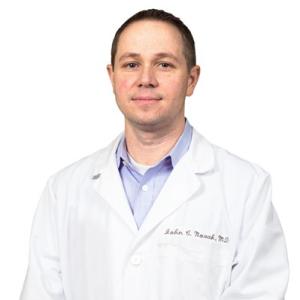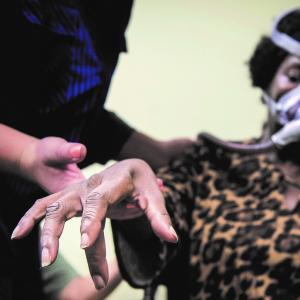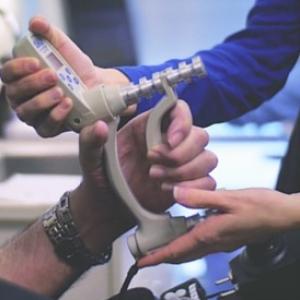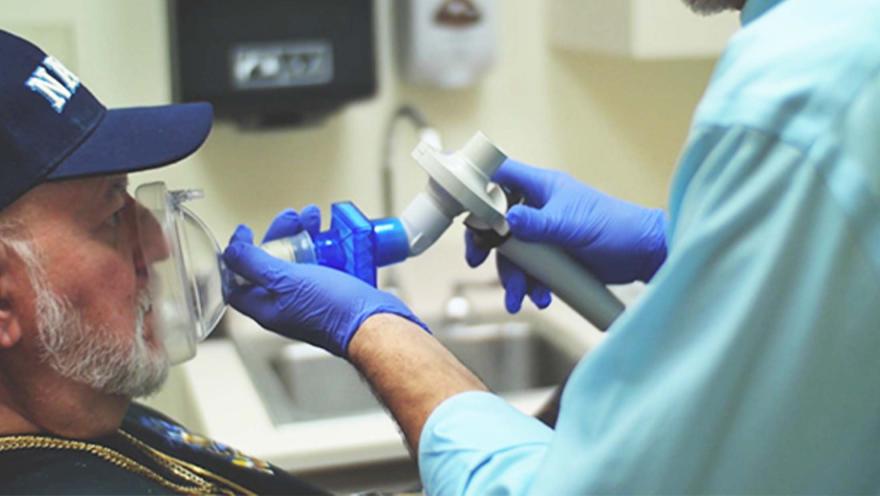This publication is the second of a four-part series shining a spotlight on ALS multidisciplinary care.
While there are many moving parts within an ALS multidisciplinary clinic, each team member plays an important role in delivering critical care for people living with ALS and their families. The leader of the team is the medical director, providing the professional guidance and support necessary to meet the unique needs of each patient throughout their journey living with ALS.

“The medical director position at an ALS clinic is critical to the delivery of effective multidisciplinary patient care,” says Lori Banker-Horner, senior director of clinical programs at The ALS Association. “Their knowledge and leadership of a coordinated team ensures their patients receive the highest level of specialized care needed to effectively manage this complicated condition.”
We recently spoke with Dr. John Novak, a neurologist and medical director at OhioHealth, an ALS Association Certified Treatment Center of Excellence in Columbus, Ohio. Along with one of his partners, Dr. Novak started this multidisciplinary clinic in 2012 with the goal of improving care for people living with ALS and their families.
What exactly is multidisciplinary care for people living with ALS?
Patients living with ALS may have a variety of symptoms ranging from speech problems to mobility limitations. To really approach these patients from all angles, you need a team of specialists that can cover all the possible problems that may arise. Physical, occupational and speech therapists can help cover from head to toe. A registered dietitian assesses nutritional needs while respiratory therapists evaluate for respiratory symptoms/weakness and manage any ventilatory devices.
The psychosocial needs of people living with ALS can be significant as well, so we have the benefit of a social worker to help address those issues. We have all these team members in clinic so they can see the patient in one visit. This is better for patient convenience, but also to help coordinate their care. After the patients have left clinic, we hold a wrap up meeting so that we can all discuss our plans and adjust accordingly based on what others bring up. I do not feel any one therapist or discipline can operate in isolation and working together on a plan to maximize the patient’s care is important.
I also feel multidisciplinary care can refer to caring for patients not only in clinic, but also out in the community. Education groups, wellness programs and a link to community resources can be just as important for our patients and their caregivers or family. Partnering with The ALS Association helps to achieve this goal and gives patients a link to support between clinic visits.

Can you briefly describe your role as the Director of an ALS clinic?
As the director of the clinic and physician, I focus my responsibilities on the medical management of the patient and try to address those needs specifically. I defer the therapy management of patients to that specific therapist, as they know much more about their field than me. I often tell patients my main job is to sign the orders that the rest of the team generates as they are more helpful than me. Hopefully I am slightly more useful than that, but somedays it may depend on who you ask. Also, as director of the clinic, I want to ensure we are keeping up with the best care we can offer so education for the team and always evaluating what we do in clinic is important.
What are the benefits of multidisciplinary care for people living with ALS?
More importantly than what studies show, we try to provide a very comprehensive approach to care that will address medical, physical and social needs of the patients. That takes a whole team, and as a neurologist, I know I could never adequately handle all the needs of each patient on my own. We also try to make this care convenient as patients see all the therapists in one visit to avoid multiple trips. Many patients face mobility challenges or must travel long distances to attend a clinic such as this so while the visit may be a long one, we hope to address a lot of things during the visit.

ALS clinics tend to be more up to date on the latest care recommendations and guidelines set by the American Academy of Neurology which may translate to better care. The staff working in these clinics are typically dedicated to working with people living with ALS, so their knowledge and experience is helpful. ALS is rare enough that some clinicians may not know much about it, but in an ALS-specific clinic, patients will be cared for by people that do this all the time.
Can you describe a typical day at your clinic?
A typical day is hard to describe as I am not sure we have such a thing. Every clinic day is unique as patients come to us in a variety of physical and mental states. Some want to come in and ask about my latest foster puppies or if I have run any races lately, so the visit may be very social and light. Some need to have emotional discussions about their care plans and prognosis. Our goal is to adjust to their needs and deliver care in a way that is comfortable to them.
Out in the hall, there is a bit of controlled chaos going on as we decide who is seeing what patient next. We are all rotating around trying to get in with each patient, updating each other along the way and keeping track of who still needs to be seen. We also do some telehealth visits each clinic day for those that could not get to clinic in person. We still have every discipline see the patients on video as well, so they are not much different than a regular visit. Clinic can be tiring as we are running from room to room nonstop, but at the end of the day, there is a sense of satisfaction that we helped our patients the best we could.
The ALS Association is committed to making ALS a livable disease. What role do you see multidisciplinary care will play in making that a reality?
I think one big thing that we can do is to help our patients do what they can to enjoy their lives, despite having ALS. If a patient has a particular hobby or wants to travel, teams like this help figure out ways to achieve those goals. Much of this is not in the textbooks but important to people living with ALS and their families. It takes some creative thinking at times but that is the advantage of the team approach to care. Teams like ours want to see patients out doing things and living the best they can. Whether it’s helping with home automation, travel tips or troubleshooting how to continue to pursue a specific hobby, we love to help patients live their lives with ALS. I think that type of work would be very difficult for a single clinician to tackle and needs a team approach.
In the future, we will have better treatments that improve survival and slow progression. The ALS-dedicated centers will be the ones testing these and treating them once approved. ALS is rare enough; many clinicians do not know how to treat it and may not keep up with the latest therapies. Dedicated centers will make ALS livable by using these therapies and staying up to date with a rapidly changing field.
Special thanks to Dr. Novak for sharing his unique perspective about the importance of multidisciplinary ALS care and his experience as medical director at OhioHealth.
To learn more about multidisciplinary ALS care and The Association’s Certified Treatment Centers of Excellence and Recognized Treatment Centers Program, visit our website HERE. To continue to learn more about the disease and follow stories about people living with ALS in the community, follow our blog at als.org/blog.


Comments
Hello- my 67 year old sister was diagnosed with progressive motor neuron disease and could no longer walk, turn pages in a book, lift a glass, etc. She was started on cholestyramine 4 months ago (for unrelated reason), and is slowly regaining the use of her hands and arms. She is also able to move her toes again. I read the recent results of a study suggesting that altered cholesterol metabolism may have something to do with ALS (not sure if causal or effect), and wondered if anyone has ever seen reversal of function in ALS. Thank you.
Join the conversation. Please comment below.